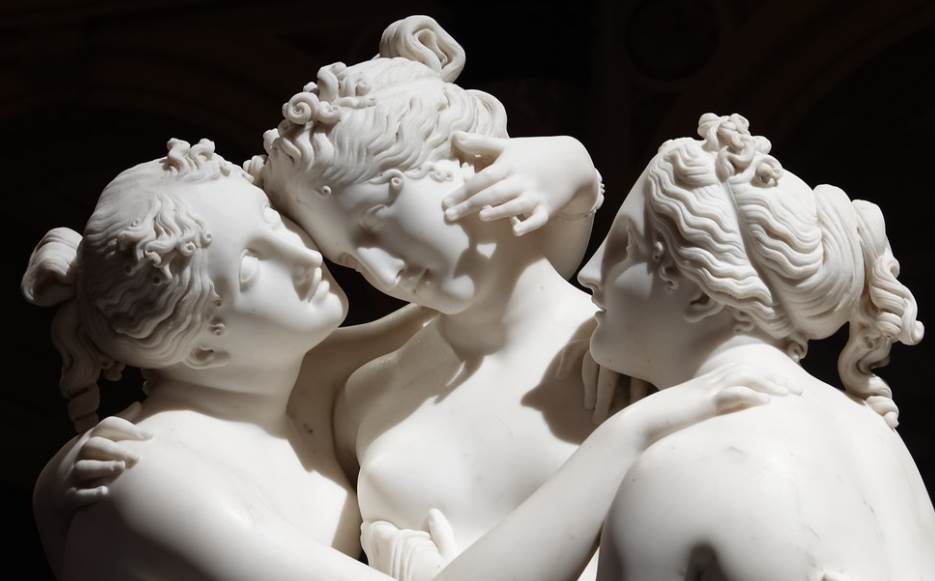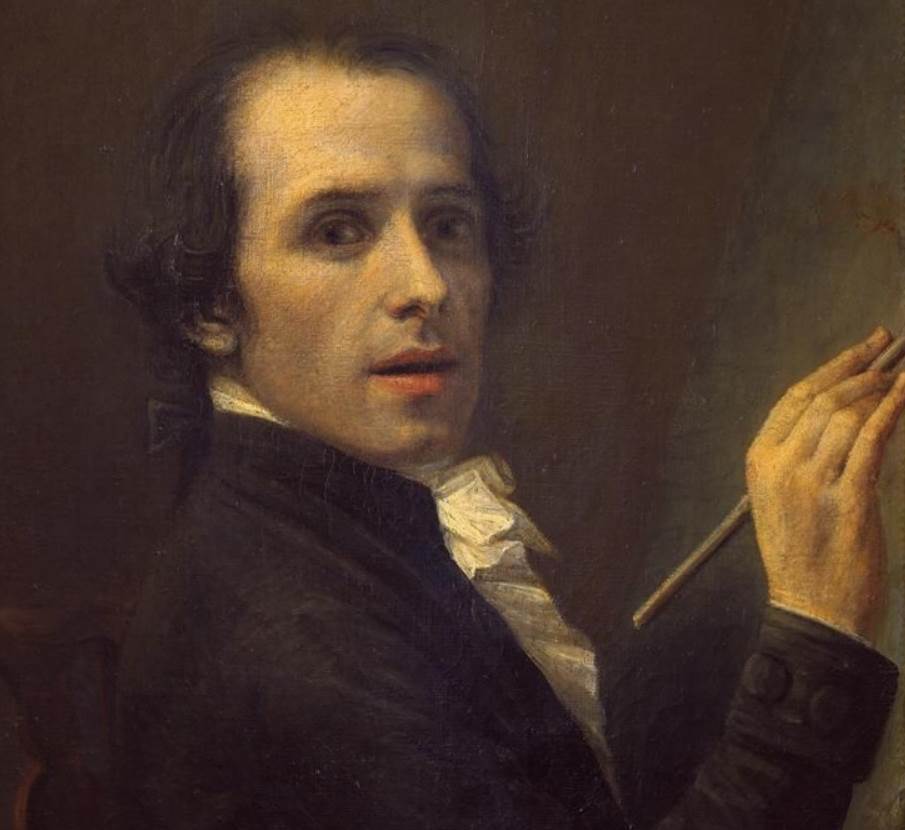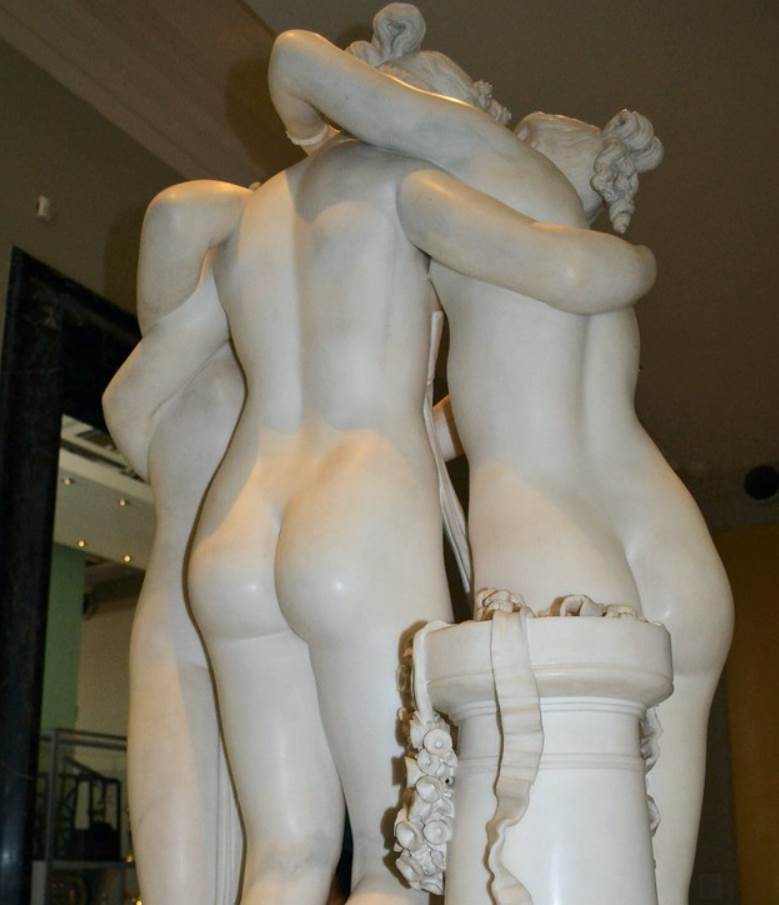A very popular theme among historical artists is a collection of 3 female figures from Greek Mythology. These are referred to as the “Charites” or “Graces” and have been both painted and sculpted numerous times.
Let’s take a closer look at “The Three Graces” by Antonio Canova (1757-1822), some of the most impressive works in the oeuvre of this renowned Neoclassical sculptor.
1. The first version was commissioned by the wife of Napoleon I
The Three Graces is the name of two sculptures produced by renowned Italian Neoclassical artist Antonio Canova.
During the early 19th century, the artist had become one of the most sought-after artists in Europe, and this translated into commissions from the highest levels.
The first version of the sculpture was commissioned by Empress Josephine (1763-1814), the wife of Napoleon Bonaparte.
It was produced in 1813, the year before she passed away, and brought to Saint Petersburg in Russia by her grandson Maximilian.
This version can still be admired at the Hermitage Museum in this city.

2. The second version was commissioned by a British politician
When Lord John Russell, the 6th Duke of Bedford, visited the studio of Canova in Rome in the year 1814, he came across the original version of the sculpture.
He was so impressed by the work that he offered to buy it straight away, but Empress Josephine’s son, Eugène, was quick to claim it.
Regardless, John Russell commissioned his version of the work, which was completed between 1814 and 1817.
It would take 2 more years before the sculpture was transported to Woburn Abbey in Bedfordshire, the residence of the Duke of Bedford.
This version of the work is now co-owned by both the Victoria and Albert Museum in London and the National Galleries of Scotland in Edinburgh.

3. The 3 figures each represent something particular in Greek mythology
The three figures of the statue are known as “Charites,” goddesses in Greek Mythology also known as “Graces.”
They have been identified from left to right as:
- Euphrosyne – The goddess of joy, amusement, and mirth.
- Aglaea – The goddess of elegance, beauty, and splendor.
- Thalia – The goddess of youth and abundance.
According to Greek mythology, the particular job that these 3 goddesses had was to provide entertainment to the guests of the gods during feasts and banquets.
Just good company to bring smiles to the guest’s faces, something they were more than capable of doing.

4. The sculptures highlight the unique talent of the artist
The sculpture was carved from a single block of marble. Because of the high demand for the artist, he had a bunch of assistants who prepared the block for him according to his instructions.
The magic happened when Canova started working on the final part of the sculpture and turned the roughly finished statue into a smooth work of art.
And this was exactly the unique talent of the artist. He was able to depict smooth skin in an extremely natural way.
This is especially emphasized by this work of art which depicts the smooth and soft flesh of three young females.

5. It’s considered to be the epitome of the Neoclassical movement
Another interesting feature about this version of The Three Graces is that it’s considered to be the ultimate representation of the Neoclassical art movement.
The Baroque artists of the 17th century had the unique ability to depict an overly dramatic snapshot in time.
This is especially emphasized by the works of Gian Lorenzo Bernini such as, for example, Apollo and Daphne (1625) and the “Ecstasy of Saint Teresa” (1651), to name just a few.
Canova depicted the females in such a way that they appear to be both harmonious and without any real sense of time. This leaves a lot up to the imagination, one of the great features of art from classical antiquity.

More interesting facts about The Three Graces by Canova
6. Both sculptures are pretty much life-sized. The version in the United Kingdom has dimensions of 173 x 97.2 x 57 centimeters (68 x 38 x 22 inches).
The version at the Hermitage Museum is slightly bigger as it stands 182 centimeters (71 inches) tall.
7. Whan the sculpture was transported from Rome to Woburn in Bedfordshire, Antonio Canova traveled to the south-central part of England as well.
The Duke of Belford had a rotunda created at the western end of his art gallery called the “Temple of the Graces.” Canova helped with the installation by advising the duke on how to position it and which type of lighting to use.
That’s the kind of customer service Canova provided and which made him one of the most popular artists of his time, apart from his undeniable talent of course.
8. It appears that Canova himself preferred the second version of the work himself. He made several changes to it, including the material which was changed from veined to white marble.
The other changes he made were to change the pillar behind the figure on the left (Euphrosyne) from square to round, and to make the waist of the central figure (Aglaea), a bit bigger.

9. The original version of the sculpture only entered the collection of the Hermitage Museum in Saint Petersburg in 1902.
For the entire 19th century it remained in the hands of the “Dukes of Leuchtenberg,” the ascendants of the adopted stepson of Emperor Napoleon I named Eugène de Beauharnais (the son of Empress Josephine).
10. Even though the sculpture created for Empress Josephine was the first marble sculpture he created about this subject, Antonio Canova already produced other works of art related to it.
These include multiple drawings, a terracotta sketch (1810), and a painting that he created in the year 1799. The most likely model of the marble sculpture was a plaster cast.
Both the painting and this plaster cast can now be admired in the Canova Museum in the artist’s hometown of Possagno.



